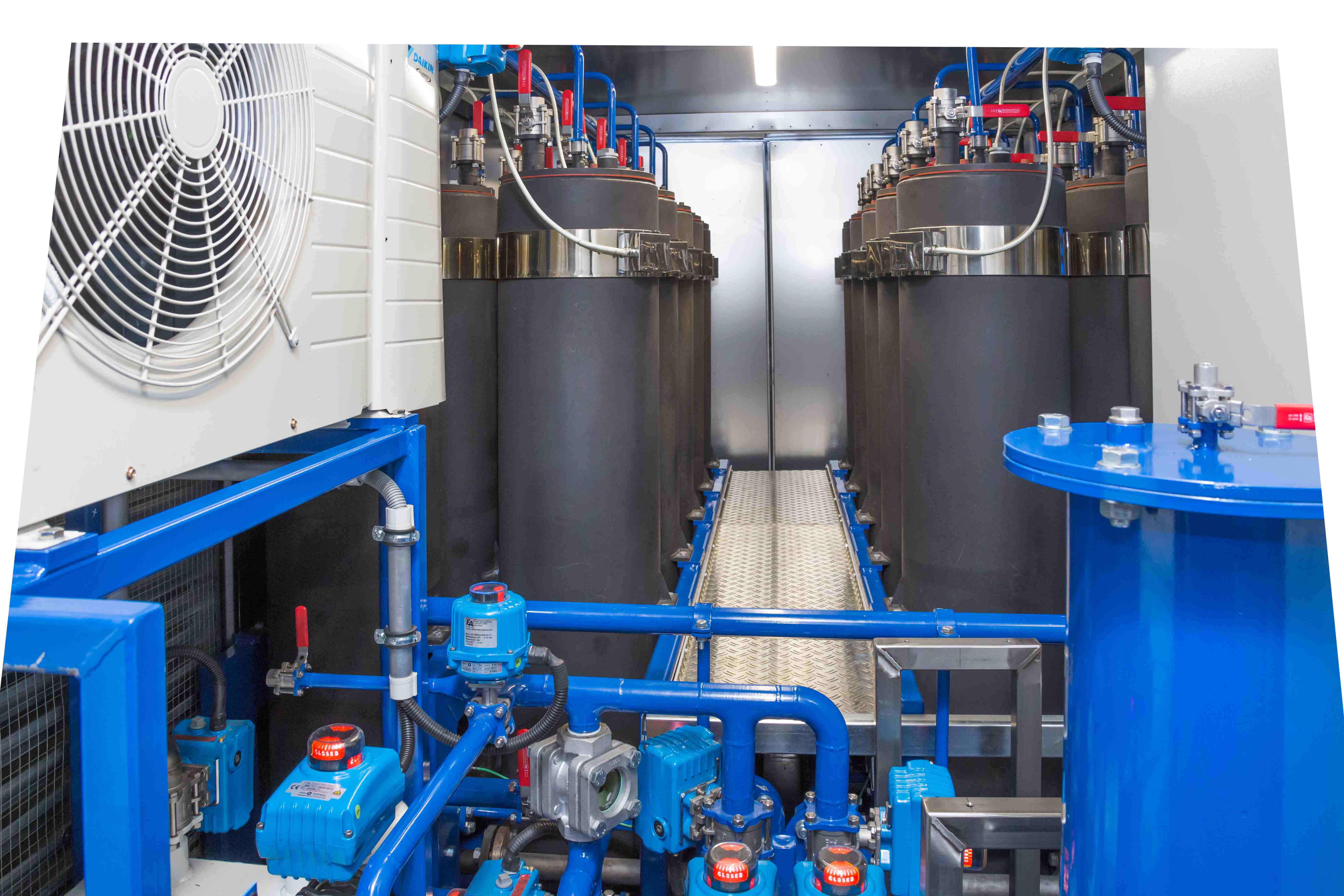The Role of a Transformer Oil Regeneration Plant in Modern Sector
Wiki Article
How Regenerated Transformer Oil Prolongs Transformer Lifespan
The role of transformer oil is vital in making certain the dependability and longevity of transformers, offering as both an insulator and coolant. Regenerated transformer oil supplies a compelling remedy to boost these functions by successfully getting rid of damaging contaminations that compromise efficiency.Significance of Transformer Oil
Transformer oil plays a crucial role in the reliable operation of electric transformers. It largely works as a shielding medium, ensuring and avoiding electric discharges that elements operate securely under high voltage conditions. The oil's dielectric residential or commercial properties are fundamental to maintaining the stability of the transformer, as they decrease the danger of failures that can result in expensive downtimes or devastating cases.Along with its insulating abilities, transformer oil likewise operates as a coolant. As transformers run, they create heat that needs to be dissipated to avoid overheating and subsequent damages. The oil distributes within the transformer, taking in and moving warmth far from vital components, therefore preserving optimum operating temperatures.
Furthermore, transformer oil works as a barrier versus moisture and pollutants, which can compromise the performance and long life of the transformer. Its chemical buildings assist in counteracting acids and other results that may create with time, contributing to the total health and wellness of the electric system.
Benefits of Regenerated Oil

Additionally, regenerated transformer oil has a lower level of pollutants, consisting of particles and contaminants that can break down efficiency. This pureness not just enhances the oil's thermal conductivity yet additionally extends the operational lifespan of transformers by decreasing overheating threats. The boosted thermal security of restored oil ensures consistent performance even under high operating temperatures, which is important for preserving transformer effectiveness.
An additional advantage is its ecological influence. Restored oil advertises sustainability by lowering waste and the need for brand-new oil production, thereby reducing the carbon impact related to transformer maintenance. Reclaimed Transformer Oil. The long life of regenerated oil translates to reduced upkeep expenses over time, as fewer oil changes and much less constant devices downtime are needed.
Process of Oil Regeneration
The regrowth of transformer oil includes a methodical process developed to recover the oil's initial residential or commercial properties and enhance its efficiency. This procedure usually begins with the elimination of the used oil from the transformer, which is then based on different purification techniques.The very first step in the regeneration process is the filtering, where strong pollutants such as sludge, steel, and dust fragments are gotten rid of. This is usually adhered to by vacuum cleaner distillation, which aids to eliminate moisture and unstable compounds, consequently enhancing the oil's dielectric strength.

Influence on Transformer Efficiency
Restoring the buildings of regenerated transformer oil considerably affects the overall performance of transformers. Improved dielectric toughness is among one of the most crucial advantages, as it permits for better insulation and minimizes the likelihood of electrical failure. This enhancement leads to a more steady operation under high voltage conditions, inevitably leading to enhanced effectiveness.In addition, the elimination of contaminants and deterioration items throughout the regrowth procedure minimizes the risk of overheating. Cleaner oil promotes far better heat dissipation, which is vital for preserving ideal operating temperature levels. As a consequence, the thermal performance of the transformer is boosted, enabling greater tons without jeopardizing dependability.
In addition, the chemical security of restored oil makes certain long term functional life. It resists oxidation and destruction, reducing the regularity of upkeep treatments and oil substitute. This security not just adds to enhanced performance but also aligns with sustainability objectives by decreasing waste.
Future of Transformer Upkeep
As advancements in technology remain to improve the landscape of electric engineering, the future of transformer maintenance is positioned for substantial transformation. The assimilation of smart innovations, such as IoT sensing units and predictive analytics, enables real-time monitoring of transformer health and wellness, improving the ability to preemptively address concerns before they escalate right into major failures. This aggressive technique not only optimizes operational efficiency yet likewise prolongs the life expectancy of transformers.Moreover, the application of fabricated knowledge (AI) in data evaluation allows for even more accurate fault discovery and medical diagnosis. By leveraging artificial intelligence algorithms, upkeep teams can identify patterns in functional data that human experts may ignore, resulting in even more educated decision-making.
In addition, the adoption of green practices, including the use of regenerated transformer oil, is set to redefine maintenance methods. This sustainable method not just decreases environmental effect yet likewise boosts the overall health of the transformer.
Finally, the change in the direction of automation in maintenance procedures is anticipated to streamline operations, minimize downtime, and reduced prices. As these innovations continue to develop, the future of transformer maintenance will certainly end up being a lot more effective, trusted, and lasting, ensuring the honesty of vital electrical infrastructure.
Conclusion
The usage of regenerated transformer oil considerably improves the operational longevity of transformers. By effectively restoring dielectric strength and thermal stability, this oil plays a vital function in mitigating risks related to overheating and oxidation. The regeneration process not only removes hazardous impurities but also reduces upkeep regularity and oil substitute prices. Eventually, the adoption of regenerated oil represents a crucial innovation in transformer upkeep, ensuring optimal efficiency and sustainability in the administration of electrical infrastructure.The role of transformer oil is crucial in guaranteeing the dependability and durability of transformers, serving as both an insulator and coolant.Transformer oil plays an essential duty in the effective procedure of electrical transformers. Restored oil promotes sustainability by decreasing waste and the need for brand-new oil manufacturing, consequently decreasing the carbon impact associated with transformer maintenance.Bring back the residential properties of regenerated transformer oil substantially influences the general efficiency of transformers.The usage of regenerated transformer oil dramatically enhances the functional longevity of transformers.
Report this wiki page